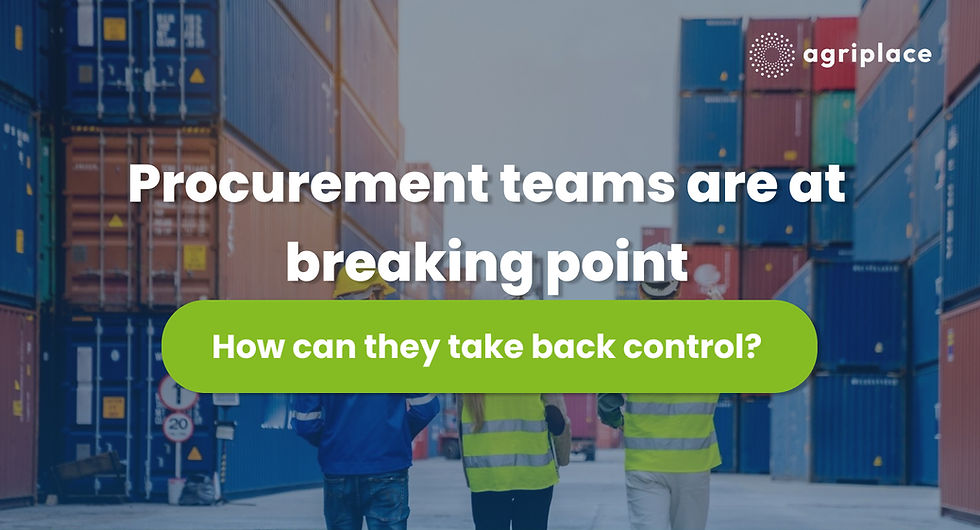How to automatically assess water risks with Agriplace?
- agriplace

- Jan 17, 2023
- 2 min read
Updated: Mar 1, 2023

With global fresh water supplies becoming ever more scarce, it is an important factor to consider when measuring potential risks in supply chains. As agriculture is responsible for around 70% of the world’s fresh water supply, businesses tied to this industry are the ones most in need to understand the potential water risks along their whole supply chain, rather than only their direct water consumption. By doing so, companies can identify areas in which they are most vulnerable and take steps to mitigate these risks, such as by implementing water conservation measures or collaborating with suppliers to improve water management practices, potentially ensuring the long-term sustainability of the business and its supply chain. Additionally, addressing water risks can help businesses meet regulatory requirements and consumer demand for products that are produced in a sustainable manner.
As a matter of fact, measuring water risks in supply chains is one of the biggest challenges in the sustainability realm, mainly due to its extremely high impact on sustainable sourcing, but also because it needs to be looked at on a very granular level. Assessing water risk at country level is a shatter gun approach, providing only a minimum level of risk assessment. Regional assessment on the other hand allows full awareness of potential risks.
It is for this reason that Agriplace Supply Chain Approval now allows its users to not only track the address and country of an organization, but also their region. Once the region is selected (as shown in the example below), the platform runs it through the newly added WWF Water Risk Filter (WRF) database, and immediately adds a water risk category to the respective supplier.

What’s more, in order to keep tackling this important issue, further steps are currently in the pipeline. Indeed, soon it will be possible to automatically fill in the region field based on the GlobalG.A.P. database connection, which will then provide users with longitude and latitude for each supplier. This step will be specifically helpful because these Water Risk Categories can be used in Agriplace Supply Chain Approval in order to set up specific rules for certification. In other words, just by filling out the regional location, the system will automatically assess and mitigate water risks.

This new function will help give direct insights into the water risk levels (as shown above), by showing a more comprehensive overview. The aim of adding the regional function to our system is to be able to simplify the life of quality managers as they try to keep track of all possible risks for safe and sustainable supply chains.




Comments